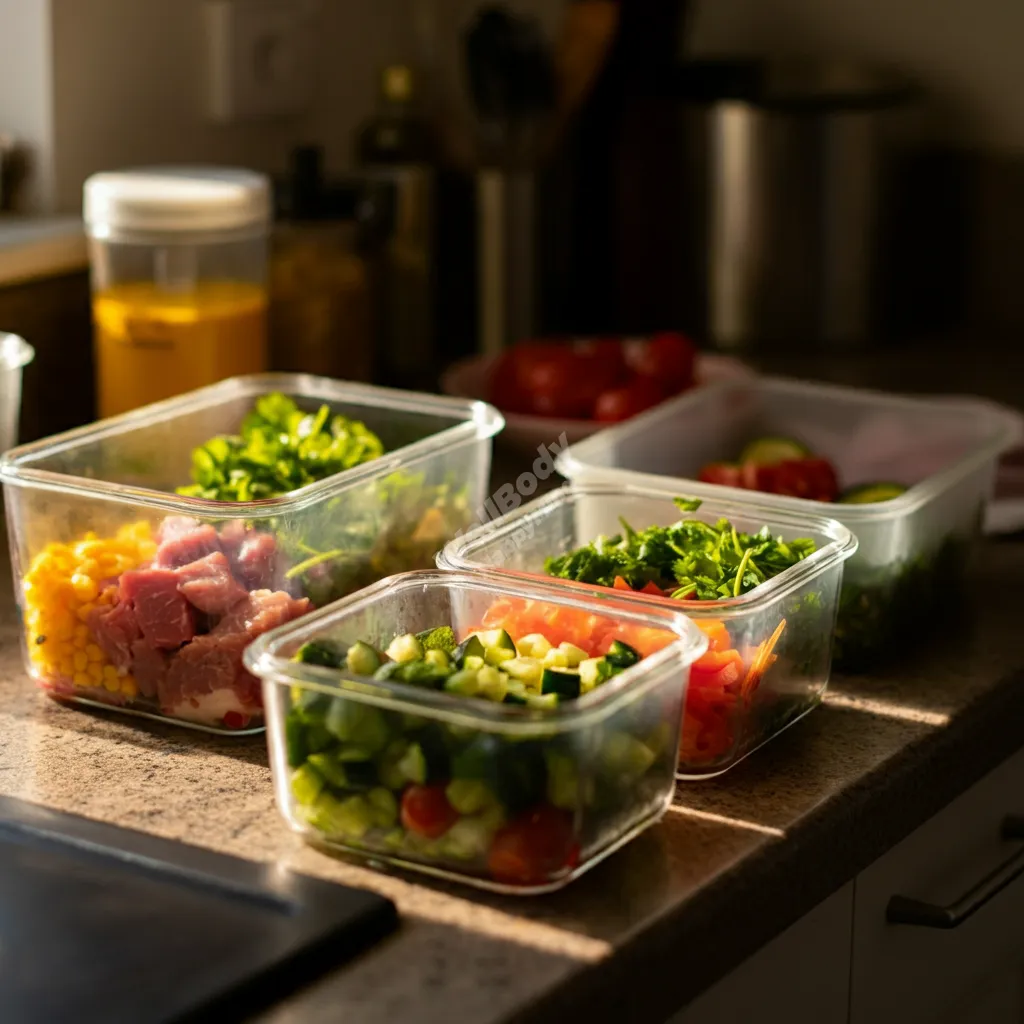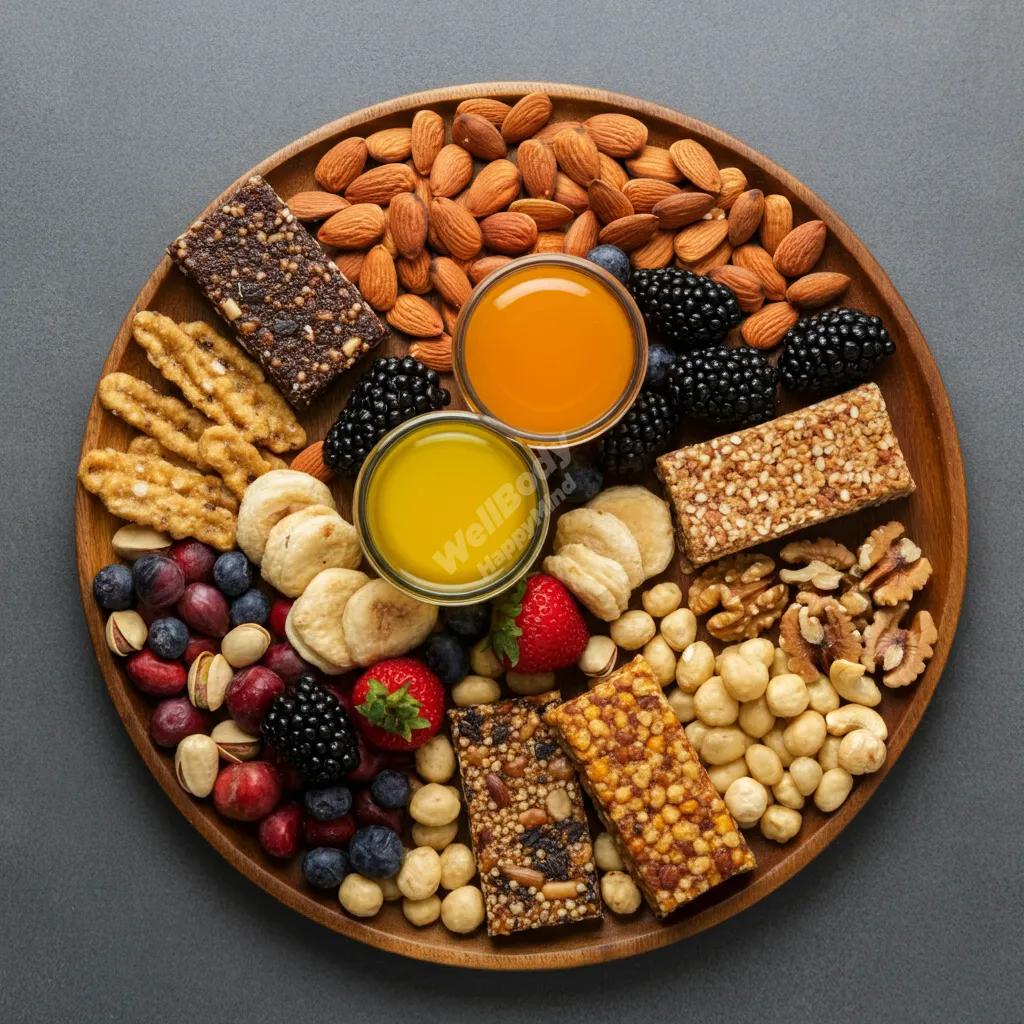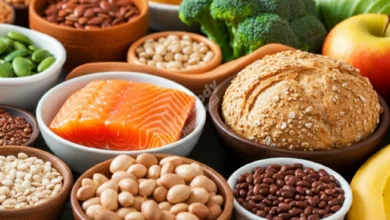Navigating the Challenges of Eating Healthy on a Tight Schedule

Introduction
Ever felt like you’re caught in a whirlwind of deadlines, meetings, and endless to-do lists, leaving you with barely enough time to breathe, let alone eat well? You’re not alone! A recent survey found that 42% of adults skip meals due to their busy schedules. But here’s the kicker: what if I told you that eating healthy on a tight schedule isn’t just possible, but could actually make your life easier?
In this post, we’ll explore practical, easy-to-implement solutions that will help you maintain a nutritious diet even when time is not on your side. From quick and delicious meal ideas to smart shopping strategies, we’ve got you covered. Ready to transform your eating habits without adding hours to your day? Let’s dive in!
Understanding the Obstacles

When it comes to eating healthy on a tight schedule, several common barriers can trip us up. Let’s take a look at what we’re up against:
- Lack of time: Between work, family, and other commitments, finding time to prepare healthy meals can feel impossible.
- Convenience of fast food: When you’re rushed, the drive-thru can seem like the only option.
- Limited meal prep knowledge: Not knowing how to quickly prepare nutritious meals can lead to unhealthy choices.
- Grocery shopping challenges: Finding time to shop for fresh ingredients can be difficult.
- Stress and fatigue: These can lead to poor food choices and emotional eating.
These obstacles don’t just affect our waistlines – they impact our overall health and well-being. When we consistently choose quick, unhealthy options, we may experience:
- Low energy levels
- Mood swings
- Decreased productivity
- Weakened immune system
- Increased risk of chronic diseases
Understanding these challenges is the first step in overcoming them. In the following sections, we’ll explore practical strategies to navigate these obstacles and make healthy eating a reality, even with the busiest of schedules.
The Benefits of Prioritizing Healthy Eating

Making healthy eating a priority, even with a packed schedule, can have profound effects on your life. Let’s explore the short-term and long-term advantages:
Short-term benefits:
- Increased energy: Nutrient-rich foods fuel your body efficiently, helping you power through busy days.
- Better mood: A balanced diet can help stabilize your emotions and reduce stress.
- Improved focus: Proper nutrition supports brain function, enhancing concentration and productivity.
- Better sleep: Healthy eating habits can lead to more restful nights.
Long-term benefits:
- Weight management: Consistent healthy eating helps maintain a healthy weight.
- Reduced risk of chronic diseases: A nutritious diet can lower the risk of heart disease, diabetes, and certain cancers.
- Stronger immune system: Regular intake of vitamins and minerals boosts your body’s defenses.
- Improved skin health: A balanced diet can lead to clearer, more radiant skin.
Surprisingly, prioritizing healthy eating can actually save you time in the long run. Here’s how:
- Fewer sick days: A stronger immune system means less time off work due to illness.
- Increased productivity: Better focus and energy levels help you accomplish tasks more efficiently.
- Reduced healthcare costs: Preventing chronic diseases can save time and money on medical appointments.
- Consistent energy levels: Avoiding sugar crashes means more stable performance throughout the day.
By investing a little time in healthy eating habits now, you’re setting yourself up for a more efficient, productive, and healthy future. Remember, small changes can lead to big results over time!
Quick and Nutritious Meal Ideas

Eating healthy on a tight schedule doesn’t mean sacrificing taste or nutrition. Here are some quick and easy meal ideas for each part of your day:
Breakfast Options for Busy Mornings
- Overnight oats: Mix oats, milk, and your favorite toppings in a jar the night before.
- Greek yogurt parfait: Layer Greek yogurt with berries and granola.
- Avocado toast: Whole grain toast topped with mashed avocado and a boiled egg.
- Smoothie packs: Freeze pre-portioned smoothie ingredients for quick blending.
- Chia seed pudding: Mix chia seeds with milk and fruit the night before.
- Breakfast burrito: Wrap scrambled eggs, veggies, and cheese in a whole wheat tortilla.
Lunch Solutions for Work or On-the-Go
| Protein | Carb | Veggie | Combo Idea |
|---|---|---|---|
| Canned tuna | Whole grain crackers | Cherry tomatoes | Tuna salad with crackers and tomatoes |
| Hard-boiled eggs | Quinoa | Baby spinach | Quinoa bowl with eggs and spinach |
| Rotisserie chicken | Brown rice | Steamed broccoli | Chicken and broccoli rice bowl |
| Chickpeas | Pita bread | Cucumber slices | Quick homemade hummus with pita and veggies |
Dinner Recipes Ready in 30 Minutes or Less
- Sheet Pan Salmon and Veggies: Place salmon fillet and chopped vegetables on a sheet pan, season, and bake for 20 minutes.
- Stir-Fry Bonanza: Sauté your choice of protein with mixed vegetables and serve over brown rice or cauliflower rice.
- Veggie-Packed Frittata: Whisk eggs with milk, pour over sautéed vegetables in an oven-safe pan, and finish under the broiler.
- Quick Chili: Combine canned beans, diced tomatoes, and pre-cooked ground turkey in a pot with chili seasoning. Simmer for 20 minutes.
These quick meal ideas prove that healthy eating doesn’t have to be time-consuming. With a little planning, you can enjoy nutritious meals even on your busiest days!
Meal Prepping Strategies for Time-Saving

Meal prepping is a game-changer for busy individuals looking to maintain a healthy diet. Let’s break it down:
Basics of Meal Prepping
Meal prepping involves preparing meals or ingredients in advance to save time during the week. This can range from cooking full meals to simply washing and chopping vegetables.
Step-by-Step Guide to Efficient Meal Prep
- Plan: Decide on your meals for the week and make a grocery list.
- Shop: Buy all necessary ingredients in one trip to save time.
- Prep: Wash, chop, and portion ingredients.
- Cook: Prepare meals or components that can be easily assembled later.
- Store: Use airtight containers to keep food fresh and organized.
Time-Saving Tools and Appliances for Meal Prep
- Slow cooker: Perfect for making large batches of soups, stews, or shredded meats.
- Instant Pot: Great for quickly cooking grains, beans, or tough cuts of meat.
- Food processor: Speeds up chopping and can make quick work of sauces or dips.
- Blender: Ideal for smoothies, sauces, and pureed soups.
- Glass containers: Essential for storing and reheating prepped meals.
Tips for Successful Meal Prepping
- Start small: Begin with prepping just a few meals to avoid feeling overwhelmed.
- Batch cook: Prepare larger quantities of staples like grains or proteins.
- Use variety: Prep different components that can be mixed and matched to avoid meal fatigue.
- Label everything: Include the date prepared to ensure freshness.
- Freeze extras: Many prepped meals can be frozen for future weeks.
Remember, the goal of meal prepping is to make healthy eating on a tight schedule more manageable. It might take some time to find a system that works for you, but the time saved during busy weekdays makes it well worth the effort!
Smart Grocery Shopping for Busy Individuals
Efficient grocery shopping is key to eating healthy on a tight schedule. Here’s how to make your trips to the store quick and productive:
Creating an Efficient Shopping List
- Plan your meals for the week before shopping.
- Organize your list by store layout (produce, dairy, etc.) to avoid backtracking.
- Include quantities to prevent over-buying or under-buying.
- Use a grocery list app to save and reuse lists for common items.
Tips for Navigating the Grocery Store Quickly
- Shop the perimeter first: This is where most whole foods are located.
- Avoid peak hours: Shop early mornings or late evenings to dodge crowds.
- Don’t shop hungry: This helps prevent impulse buys of unhealthy snacks.
- Stick to your list: Resist the temptation of unnecessary items.
- Consider online shopping or delivery services to save time.
Best Convenience Foods That Are Still Healthy
- Pre-washed salad greens
- Rotisserie chicken
- Canned beans (low sodium)
- Frozen vegetables
- Pre-cut fruits and vegetables
- Greek yogurt
- Canned fish (tuna, salmon)
- Whole grain bread or wraps
- Hummus
- Hard-boiled eggs
Smart Shopping Strategies
- Buy in bulk: Purchase non-perishable items and freezer-friendly foods in larger quantities.
- Look for sales: Stock up on healthy staples when they’re discounted.
- Compare unit prices: Sometimes larger sizes offer better value.
- Check expiration dates: Ensure foods will last until you plan to use them.
By implementing these smart grocery shopping tactics, you’ll save time and make it easier to stick to your healthy eating goals. Remember, a well-stocked kitchen is your first line of defense against unhealthy food choices when time is tight!
Healthy Snacking on a Tight Schedule

Smart snacking can be a powerful tool in maintaining a healthy diet, especially when you’re busy. Let’s explore how to make the most of your snack choices:
Importance of Planned Snacking
- Stabilizes blood sugar levels throughout the day
- Prevents overeating at main meals
- Provides energy boosts when needed
- Helps meet daily nutrient requirements
Portable, Nutrient-Dense Snack Ideas
- Apple slices with almond butter
- Greek yogurt with berries
- Hard-boiled eggs
- Trail mix (nuts, seeds, and dried fruit)
- Veggie sticks with hummus
- Whole grain crackers with cheese
- Protein bars (look for low-sugar options)
- Roasted chickpeas
- Edamame
- Fruit and nut bars
How to Avoid Unhealthy Vending Machine Temptations
- Keep healthy snacks at your desk or in your bag
- Drink water first – thirst can be mistaken for hunger
- Take a short walk to curb cravings
- Choose the healthiest option if you must use the vending machine
- Plan ahead for long meetings or commutes
Tips for Successful Snacking
- Portion control: Pre-portion snacks to avoid overeating
- Balance: Aim for a mix of protein, healthy fats, and complex carbs
- Timing: Space snacks between meals to maintain steady energy
- Hydration: Pair snacks with water for better satiety
- Variety: Rotate your snacks to ensure a range of nutrients
Remember, healthy snacking is about nourishing your body and maintaining energy levels. By planning ahead and making smart choices, you can stay on track with your health goals even on the busiest of days.
Staying Hydrated Throughout the Day

Proper hydration is crucial for overall health and can significantly impact your energy levels and focus. Let’s explore how to maintain good hydration habits, even with a busy schedule:
Importance of Hydration for Overall Health and Energy Levels
- Boosts energy: Dehydration can lead to fatigue and decreased alertness
- Improves cognitive function: Helps maintain focus and mental clarity
- Supports physical performance: Essential for muscle function and endurance
- Aids digestion: Helps prevent constipation and supports nutrient absorption
- Regulates body temperature: Crucial for maintaining homeostasis
Creative Ways to Increase Water Intake
- Infused water recipes:
- Lemon and mint
- Cucumber and basil
- Strawberry and orange
- Watermelon and rosemary
- Apps for tracking water intake:
- WaterMinder
- Hydro Coach
- Plant Nanny
- Set reminders on your phone or smartwatch
- Use marked water bottles with time indicators
- Eat water-rich foods: Cucumber, watermelon, zucchini, tomatoes
Tips for Staying Hydrated on a Busy Schedule
- Start your day with a glass of water
- Keep a reusable water bottle with you at all times
- Set hydration goals for different parts of your day
- Drink a glass of water before each meal
- Opt for water instead of sugary drinks when dining out
- Use a straw to make drinking water easier and more appealing
- Experiment with sparkling water for variety
Signs of Dehydration to Watch For
- Thirst
- Dark urine
- Dry mouth
- Headache
- Fatigue
- Dizziness
Remember, staying hydrated is a simple yet effective way to support your overall health and well-being. By making it a priority and incorporating these strategies, you can ensure you’re getting enough fluids even on your busiest days.
Mindful Eating Practices for Busy Lives

Mindful eating can be a powerful tool in maintaining a healthy relationship with food, even when time is limited. Let’s explore how to incorporate this practice into your busy lifestyle:
Benefits of Mindful Eating
- Improved digestion
- Better portion control
- Enhanced enjoyment of food
- Reduced stress-related eating
- Increased awareness of hunger and fullness cues
Quick Mindfulness Techniques for Mealtimes
- Take three deep breaths before starting your meal
- Engage your senses: Notice the colors, smells, and textures of your food
- Chew slowly and thoroughly
- Put your utensils down between bites
- Eliminate distractions: Turn off screens and put away your phone
- Express gratitude for your meal, even if just for a moment
How to Avoid Stress-Induced Unhealthy Eating Habits
- Identify your triggers: Recognize what situations lead to stress eating
- Plan healthy alternatives: Keep nutritious snacks readily available
- Practice stress-relief techniques:
- Deep breathing exercises
- Short meditation sessions
- Quick stretching routines
- Stay hydrated: Sometimes thirst is mistaken for hunger
- Get enough sleep: Lack of sleep can increase cravings for unhealthy foods
Incorporating Mindfulness into a Busy Schedule
- Start small: Begin with one mindful meal or snack per day
- Use meal prep time as a mindfulness opportunity
- Set reminders to check in with your hunger levels throughout the day
- Practice mindful eating during your commute (if you’re not driving)
- Take a mindful minute before diving back into work after lunch
Remember, mindful eating isn’t about perfection. It’s about bringing more awareness to your eating habits and enjoying your food more fully. Even small moments of mindfulness can make a big difference in your overall relationship with food and eating.
Balancing Eating Out and Home-Cooked Meals
Finding a balance between eating out and preparing meals at home is crucial for maintaining a healthy diet on a busy schedule. Let’s explore strategies to make the best of both worlds:
Tips for Making Healthier Choices When Dining Out
- Check the menu in advance to plan your order
- Choose grilled, baked, or steamed options over fried
- Ask for dressings and sauces on the side
- Start with a salad or vegetable-based soup
- Practice portion control: Consider splitting a meal or taking leftovers home
- Opt for water or unsweetened beverages instead of sugary drinks
How to Incorporate Restaurant Meals into a Balanced Diet
- Follow the 80/20 rule: Aim for 80% home-cooked meals and 20% restaurant meals
- Choose restaurants with healthier options
- Balance indulgences: If you have a heavy lunch out, opt for a lighter dinner at home
- Be mindful of weekly frequency: Limit eating out to 2-3 times per week if possible
Strategies for Limiting Takeout Frequency
- Meal prep on weekends to have quick options during the week
- Keep a well-stocked pantry for easy meal assembly
- Learn 5-10 quick, healthy recipes you can make in under 30 minutes
- Use a slow cooker or Instant Pot for effortless meals
- Plan your meals for the week to avoid last-minute takeout decisions
Making the Most of Home-Cooked Meals
- Batch cook and freeze portions for busy nights
- Invest in time-saving kitchen tools like a food processor or immersion blender
- Involve family members in meal preparation to share the workload
- Create a rotating menu of favorite meals to simplify planning
- Use leftovers creatively to reduce cooking frequency
Remember, the goal is to find a sustainable balance that works for your lifestyle. It’s okay to enjoy meals out occasionally, as long as the majority of your diet consists of nutritious, home-prepared foods. With these strategies, you can maintain healthy eating habits even with a busy schedule.
Overcoming Common Setbacks

Even with the best intentions, life can throw curveballs that challenge our healthy eating habits. Let’s address some common setbacks and how to overcome them:
Addressing Potential Challenges
Late nights at work
- Keep healthy snacks at your desk
- Prep quick, reheatable meals in advance
- Have a list of healthy late-night delivery options
Unexpected events
- Always carry a nutritious snack with you
- Learn to make quick, healthy choices at convenience stores
- Practice flexible meal planning
Travel
- Pack portable, healthy snacks
- Research healthy eating options at your destination
- Stay hydrated during your journey
Social gatherings
- Eat a small, healthy meal before attending
- Offer to bring a nutritious dish
- Practice moderation rather than complete restriction
Stress or emotional eating
- Develop non-food stress-relief techniques
- Keep a food and mood journal to identify triggers
- Stock up on healthy comfort foods
Building Resilience and Getting Back on Track
- Practice self-compassion: Don’t beat yourself up over slip-ups
- Focus on progress, not perfection
- Restart immediately: Don’t wait for Monday or next month to get back on track
- Learn from setbacks: Use them as opportunities to refine your strategies
- Celebrate small wins: Acknowledge every positive choice you make
Tips for Maintaining Motivation
- Set realistic goals and break them into smaller, achievable steps
- Track your progress using a journal or app
- Find an accountability partner or join a support group
- Reward yourself for sticking to your healthy habits (non-food rewards)
- Regularly remind yourself of your ‘why’ – your reasons for prioritizing health
Remember, setbacks are a normal part of any lifestyle change. The key is to stay resilient and keep moving forward. Every meal is a new opportunity to make a healthy choice!
Conclusion

Eating healthy on a tight schedule may seem challenging, but it’s far from impossible. Let’s recap the key strategies we’ve explored:
- Meal prepping: A game-changer for busy weeks
- Smart grocery shopping: The foundation of healthy eating
- Quick and nutritious meal ideas: Proof that healthy doesn’t mean time-consuming
- Mindful eating: Bringing awareness to our food choices
- Balancing home-cooked and restaurant meals: Finding a sustainable mix
- Staying hydrated: A simple yet crucial aspect of health
- Overcoming setbacks: Building resilience for long-term success
Remember, the journey to healthier eating habits is a marathon, not a sprint. Start by implementing one or two strategies that resonate with you the most. As these become second nature, gradually incorporate more. Every small step counts!
Key takeaways:
- Planning is crucial: Whether it’s meal prep or smart grocery shopping, a little forethought goes a long way.
- Flexibility is key: Life happens, and it’s okay to adapt your plans when needed.
- Progress over perfection: Celebrate small wins and learn from setbacks.
- Self-compassion matters: Be kind to yourself on this journey.
Remember, prioritizing your health through nutritious eating isn’t just about your waistline – it’s an investment in your energy, productivity, and overall well-being. Even with the busiest of schedules, you have the power to nourish your body and mind.
So, are you ready to take the first step towards a healthier you, despite your hectic lifestyle? Your future self will thank you for the positive changes you start making today!



